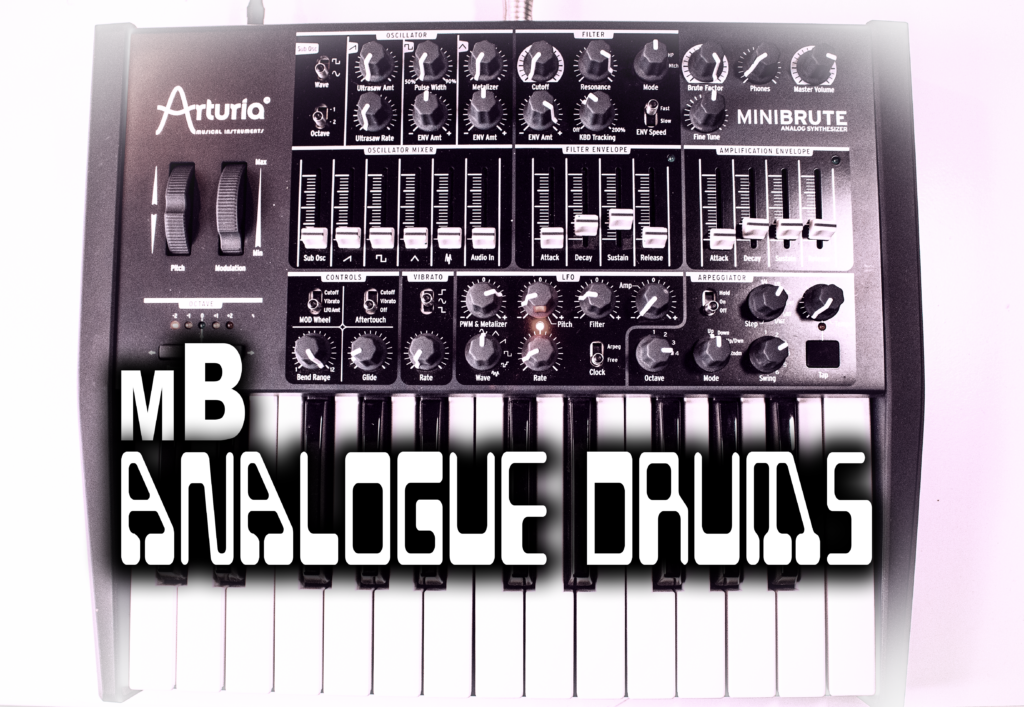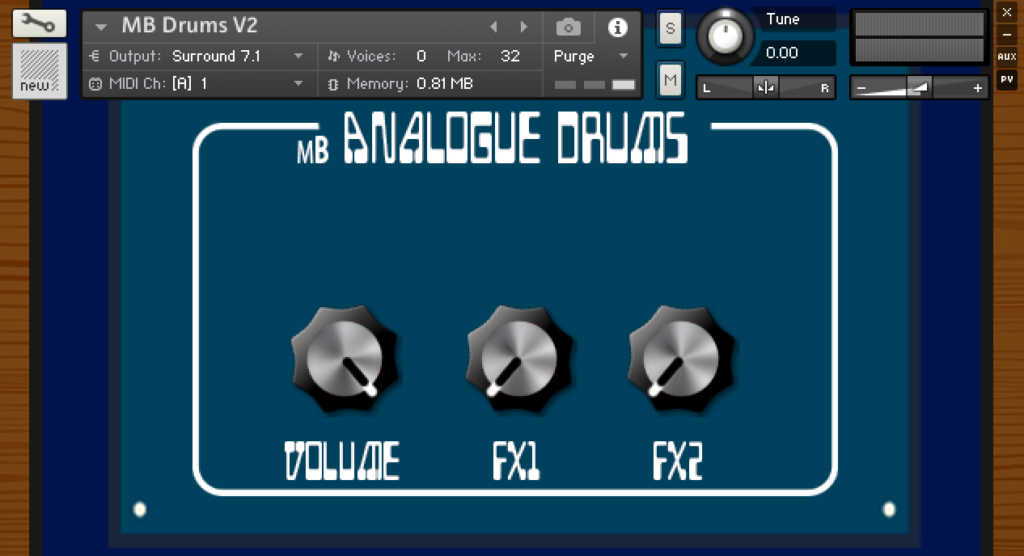MB Analogue Drums
A collection of 13 different drum sounds created with the Arturia Mini Brute Analogue Synthesiser.


ByJon Chapman
The story
When it comes to making music, digital tools are popular for their convenience, but there’s something special about analogue synthesisers. My journey with the Arturia Mini Brute, my first analogue synthesiser, has been a rediscovery of its unique charm and creative potential.
Purchased around five or six years ago, the Mini Brute stands in stark contrast to its modern counterparts. There are no LCD screens or presets as most of us are used to.
It boasts a single main oscillator, a sub oscillator, and an LFO. It has a mixer for the different oscillator types, a filter envelope, and an amp envelope.
The main catch is that it doesn’t remember your settings, so you have to jot them down on special patch cards if you want to use them again. This can be a bit of a hassle, but it helps you understand the Mini Brute better.
Initially, I preferred the convenience of virtual instruments and kept the Mini Brute aside for nearly five years. But when I revisited it recently, I realised its value. Its straightforward design makes it a great tool for learning about analogue synthesisers.
Working with the Mini Brute taught me that limitations can actually fuel creativity. It pushed me to experiment and maximise its capabilities. However, there were challenges, especially when creating certain sounds like crash cymbals, which required additional effects to enhance them.
Despite the challenges, the imperfections in the sounds I created had a unique charm that’s hard to replicate with regular software tools.
Through trial and error, I stumbled upon several happy accidents. Manipulating the glide control revealed an unexpected method for producing rich, organic kick drum sounds. This discovery, born out of pure experimentation.
Using the Mini Brute, I crafted a collection of 13 different drum sounds.
Have fun and explore the distinctive essence that the Arturia Mini Brute brings to your music.
Interface

